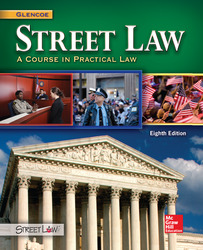
Street Law: A Course in Practical LawChapter 4: Settling DisputesChapter OverviewsConflict can sometimes cause problems, but it can also be productive if handled in a responsible way. Our legal system tries to settle as many disputes as possible outside the courts. Going to court can be time-consuming and costly, and often results in continuing tension between the parties. Methods for Solving Disputes There are three common methods used to settle disputes outside of court—negotiation, arbitration, and mediation. Negotiation is the most informal method. In negotiations, people involved in a dispute discuss their problems and try to reach an agreed upon solution. Successful negotiating is an important skill that can help you in almost everything you do. Arbitration is a more formal process in which disputing sides agree to have a third person listen to their arguments and make a decision for them. In this case, the arbitrator acts like a judge by declaring a solution for the disputing parties. However, the arbitrator may have more flexibility than a judge in devising solutions to problems. Arbitration is a common method for settling contract and labor-management disputes. Mediation takes place when a third person, a mediator, helps the disputing parties talk about their problems. Unlike an arbitrator, a mediator does not impose a decision on the parties. Mediation is voluntary and is used to solve a variety of disputes. Some schools use mediators to help resolve conflict among students. Negotiation and mediation are based on the notion that the ideas for the solution must come from the conflicting parties. The parties then have a greater interest in making the solution work. |  |















